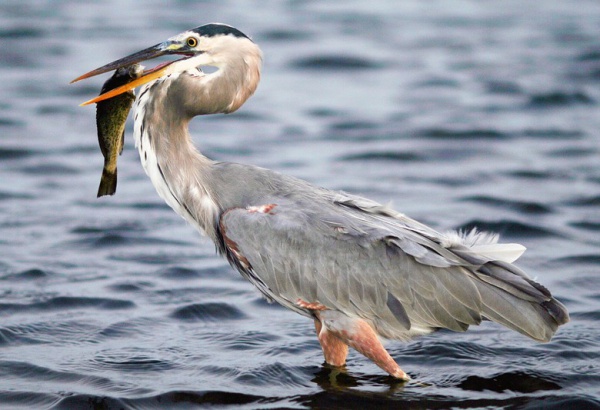Facts About Great blue heron
The great blue heron is a majestic wading bird frequently observed around open water and wetlands throughout North America, Central America, the Caribbean, and the Galápagos Islands. A white color variant found in South Florida and the Florida Keys, known as the great white heron, has sparked debate among experts. There remains uncertainty about whether it constitutes a separate species, a subspecies, or simply a color morph of the great blue heron.
First described by Carl Linnaeus, the great blue heron is closely related to the grey heron and the cocoi heron. There are five recognized subspecies, each exhibiting slight differences in size and plumage. It is one of the largest herons in North America, easily identifiable by its slate-colored flight feathers, reddish-brown thighs, and rusty-gray neck.
In terms of diet, great blue herons primarily consume small fish. However, they are opportunistic feeders and will also eat shrimp, crabs, insects, and small mammals. They hunt by wading slowly in shallow waters and using their sharp bills to spear their prey. These birds typically breed in colonies near water, constructing stick nests and laying pale blue eggs.
Great blue herons face threats from various predators, including larger birds like eagles and owls, which can prey on both young and adult herons. Human activities, such as habitat destruction and recreational disturbances, also pose significant risks to their breeding success.
In the realm of art, the great blue heron has been beautifully depicted by John James Audubon. The bird also appears in popular culture, serving as inspiration for logos of sports teams like the Delmarva Shorebirds and Inter Miami CF.

 Guatemala
Guatemala